Integrating UN SDGs into Sustainability Reporting
 Share
Share
 Copy Url
Copy Url
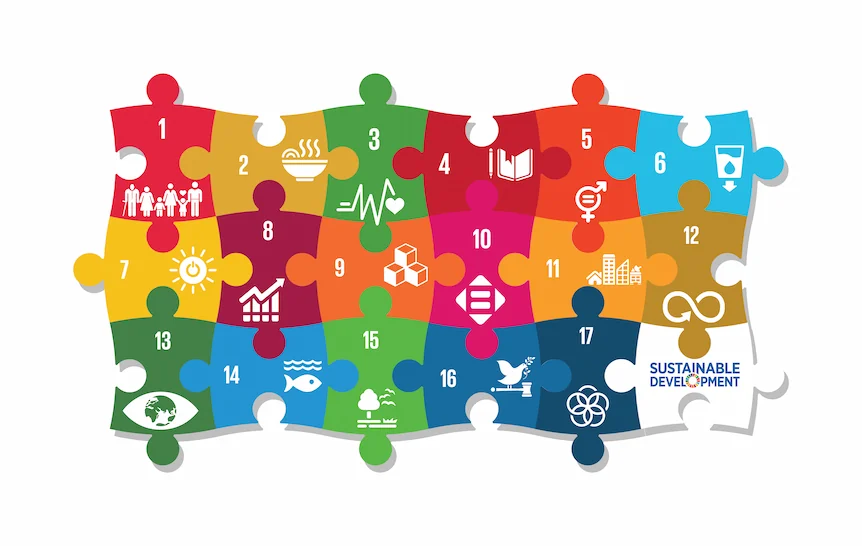
The 17 United Nations Sustainability Development Goals (UN SDGs) have created a roadmap for organizations to achieve their goals of a sustainable future. Each Goal has a set number of targets that organizations, supported by the UN, are expected to achieve by 2030.
The SDGs act as key indicators using which organizations can publish their sustainability reports.
The SDG Index Score is an assessment of each country's overall performance on the 17 SDGs, giving equal weight to each Goal. The score signifies a country's position between the worst possible outcome (score of 0) and the target (score of 100). As of 2021, the world average score stands at 66.
The 17 UN SDGs
Goal 1: No Poverty

Across the globe, the poverty crisis could cause 75 million to 95 million more people to live in poverty by the end of 2022.
The target for SDG 1 is to eradicate extreme poverty for all people everywhere, currently measured as people living on less than $1.25 a day.
To combat climate-driven poverty, a US-based company focused on expanding access to clean energy and deploying internet-enabled community centers. Some of the other initiatives companies take up include addressing the issues of malnutrition, making drinking water safe, and working with family farmers, caregivers, waste pickers, and street vendors to empower them.
Goal 2: Zero Hunger

828 million people suffered from hunger in 2021. Spotlighting malnutrition data, 22% of children under the age of 5 are stunted, 6.7% suffer from wasting and 5.7% are overweight.
The idea behind SDG 2 is to implement sustainable solutions by providing fair access to land, technology markets, sustainable food production systems, and resilient agricultural practices. This is majorly to help small-scale farmers improve their productivity and income.
Companies are using digital technology to contribute to this Goal by helping farmers cut costs, increase their yields and provide methods to sustainably grow crops that are more resilient to climate change. They also teach farmers to use natural resources efficiently.
Goal 3: Good Health and Well-Being

Health emergencies such as COVID-19 pose a global risk and have proven that it is critical for the world to always stay prepared for the worst-case scenario.
SDG 3’s target is to improve reproductive, maternal, and child health and reduce maternal mortality, end the epidemics of HIV/AIDS, achieve universal health coverage, and ensure access to safe and affordable medicines and vaccines.
An automobile company in Europe organized vaccination drives across 31 cities. Other initiatives that companies take up include providing ventilators, oxygen concentration devices, and other necessary medical supplies.
Goal 4: Quality Education
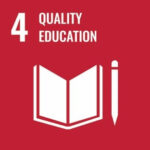
147 million children missed more than half of their in-person education over the past two years
. 9% of children in grades 1-8 fell below minimum reading proficiency levels.
SDG 4 focuses on providing long-term opportunities, equitable access to quality education, technical and vocational training, practical knowledge, and skill development.
Companies contributing to SDG 4 provide children with access to better education and healthier living conditions and invest in future generations’ talent pool. They also focus on early childhood development programs for young mothers who want to complete their secondary school or extended education.
Goal 5: Gender Equality
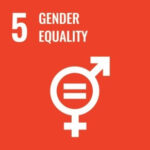
SDG 5 aims to provide women with better access to paid employment, reproductive health, reproductive rights, and, most essentially, decision-making power in the public and private spheres.
Companies are helping the underprivileged by providing opportunities across private and public services and promoting shared responsibility within the household. A US-based company is helping women in South Korea by training them for careers in cyber security.
Goal 6: Clean Water and Sanitation
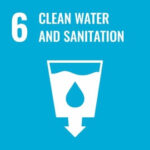
Water stress affects more than 2 billion people around the globe.
SDG 6 focuses on drinking water, sanitation, hygiene, and the quality and sustainability of water resources critical to the survival of people and the planet.
Companies commit to increasing their water efficiencies, replenishing water in stressed areas, conserving resources, avoiding carbon emissions in water treatment, and adapting to climate change. They also take up initiatives such as providing reliable access to water for household taps and toilets, piped connections, rainwater harvesting, water storage, purification, and community filtration.
Goal 7: Affordable and Clean Energy
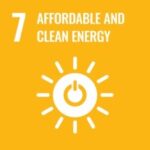
Access to energy varies widely across countries, and at the current rate of progress across businesses, the world falls short of what is required to provide clean energy at affordable costs.
SDG 7 aims at improving water quality through a reduction in population, eliminating dumping and minimizing the release of hazardous chemicals and materials, halving the proportion of untreated wastewater, and substantially increasing recycling and safe reuse globally.
Companies are taking up initiatives such as minimizing or eliminating their carbon footprints and transitioning to renewable energy sources for power operations. They take initiatives to protect and restore water-based ecosystems, including mountains, forests, wetlands, rivers, aquifers, and lakes.
Goal 8: Decent Work and Economic Growth
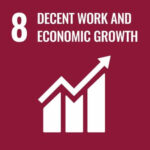
The global unemployment rate is projected to remain above its 2019 level of 5.4%, at least until 2023. In 2021, unemployment declined slightly to 6.2%, which translates into 22% of children persons in 2021 than in 2019.
The goal of SDG 8 is to sustain the per capita economic growth in accordance with national circumstances and, in particular, at least 7% gross domestic product growth per annum in the least developed countries.
Companies can achieve and contribute better by investing in training workshops for employees; promoting policies against unfair hiring, identification of child labor and forced labor; providing a favorable working environment; and ensuring the safety of employees at work.
Goal 9: Industry, Innovation, and Infrastructure
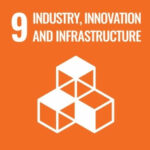
SGD 9 focuses on developing quality, reliable, sustainable, and resilient infrastructure, including regional and transborder infrastructure, and supporting economic development and human well-being with a focus on affordable and equitable access for all.
Companies can support a charity, create a map of public spaces with free Wi-Fi access, and choose environment-friendly materials for building, construction, and manufacturing for preserving natural resources.
Goal 10: Reduced Inequality
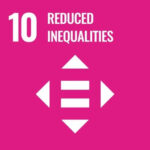
SDG 10 ensures equal opportunity and aims at reducing inequalities of outcome, including eliminating discriminatory laws, policies, and practices and promoting appropriate legislation, policies, and action in this regard.
Companies should raise their voice against all types of discrimination. They can make sure that their employees are aware of their rights in their workspace, support migrants and refugees, and most importantly, ensure women employees have equal rights.
Goal 11: Sustainable Cities and Communities
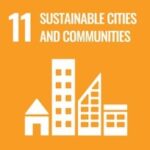
Currently, more than 3.5 billion people live in cities, and this number is expected to reach 6.5 billion by 2050. Cities generate more than 80% of the global GDP.
The goal of SDG 11 is to ensure that everyone has access to safe, affordable, accessible, and sustainable transport systems, improve road safety by expanding public transportation and pay special attention to the needs of older people, women, children, and people with disabilities.
Companies can invest in research, develop and deploy products/services, protect and invest in cultural and natural heritage, provide access to essential services for employees, and develop participatory platforms so that all voices can be heard.
Goal 12: Responsible Consumption and Production
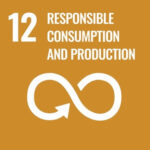
Unsustainable patterns of consumption and production are the root causes of the triple planetary crises of climate change, biodiversity loss, and pollution.
By achieving environmentally sound management of chemicals and all wastes throughout their life cycle, and significantly reducing their releases into the air, water, and soil, the aim of SDG 12 is to minimize harmful environmental impacts and adverse health impacts.
Companies should conserve all available resources and reduce all waste, help FMCG companies reduce daily food wastage, acquire resources that last, and reduce emissions of greenhouse gases and water pollutants.
Goal 13: Climate Action
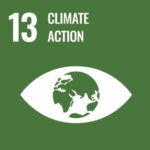
Climate change is the single biggest threat to development. As set out in the Paris Agreement, global greenhouse gas emissions would have to peak before 2025 and be reduced by 43% by 2030 to limit warming to 1.5°C above pre-industrial levels.
The target of SDG 13 is to strengthen resilience and adaptive capacity to climate-related hazards and natural disasters in all countries.
Identifying and measuring the number of gas emissions produced by companies is essential. To reduce energy consumption, responsible employees should opt for actions such as not charging mobile devices when they are not in use. Companies can provide transportation plans such as car-sharing between colleagues, lower prices on public transport, or discounts.
Goal 14: Life Below Water
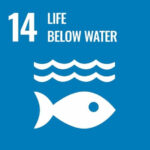
Oceans cover 70% of the planet and play a central role in the existence of life on Earth. Between 2009 and 2018, the world lost about 14% of coral reefs, often called the ‘rainforests of the sea’ because of the extraordinary biodiversity they support.
Managing marine and coastal ecosystems sustainably and protecting them to avoid significant adverse impacts, including by strengthening their resilience, and restoring them to achieve healthy and productive oceans are the focus areas of SDG 14.
Companies can help with the creation of environment-friendly products or services, such as sustainable fishing technologies or alternatives to fertilizers that cause pollution in the oceans. They can also monitor fishing equipment such as traps and nets in offshore locations.
Goal 15: Life on Land
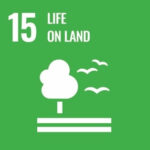
Forests are home to 80% of all terrestrial animals, plants, and insects, and approximately 60-80% of all freshwater comes from mountainous regions. Nearly 1.6 billion humans depend on forests to survive, and 2.6 billion depend directly on agriculture.
The target of SDG 15 is to ensure the conservation, restoration, and sustainable use of terrestrial and inland freshwater ecosystems and their services in forests, wetlands, mountains, and drylands, in line with obligations under international agreements.
Each company can significantly mobilize and increase its financial resources directed to conserve and use biodiversity and ecosystems correctly, finance and incentivize sustainable forest management, and combat global poaching and animal trafficking.
Goal 16: Peace and Justice Strong Institutions
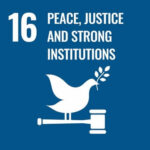
Many countries continue to suffer from protracted violence and armed conflict, and far too many people lack access to justice, information, and other fundamental rights because of weak institutions.
The target of SDG 16 is to significantly reduce all forms of violence and related death rates everywhere. It also focuses on ending abuse, exploitation, trafficking and all forms of violence against children promotes the rule of law at the national and international levels, and ensures equal access to justice for all.
Companies can work with governments to strengthen institutions and increase respect and support for the rule of law.
Goal 17: Partnerships to Achieve the Goal
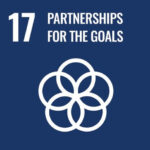
The target for SDG 17 is to strengthen domestic resource mobilization, including through international support to developing countries, to improve domestic capacity for tax and other revenue collection.
Corporate tax revenues are necessary for governments to advance in the SDGs. Therefore, businesses must comply with the laws and regulations of the states in which they operate. By investing in infrastructures, services, and growing businesses, companies can aid developing countries and discourage unsustainable activities that harm human rights and the environment.
While standardized company-level reporting on the SDGs is still underway, investors are increasingly demonstrating interest in SDG-related information from investee companies.
Disclosing your businesses’ contribution to the UN SDGs, while crucial, can be a daunting task. At Report Yak, our specialized advisory team, content developers and designers specifically cater to generating Sustainability Reports for corporates and businesses across the globe, based on the UN SDG framework.
To create your Sustainability Report with us, head here.
Related Posts
-
Simplifying ESG Disclosure for Better Impact
corporate reportingenvironmental and social initiatives
+6
Aug 28, 2025Share
Copy Url
GRI Sustainability Taxonomy: Learn How to Turn Data Into Advantage
corporate governancecorporate reporting
+11
Jul 1, 2025Share
Copy Url
Latest GRI Updates – What Companies Need to Know
Annual Report designannual reporting
+12
Jun 10, 2025Share
Copy Url


